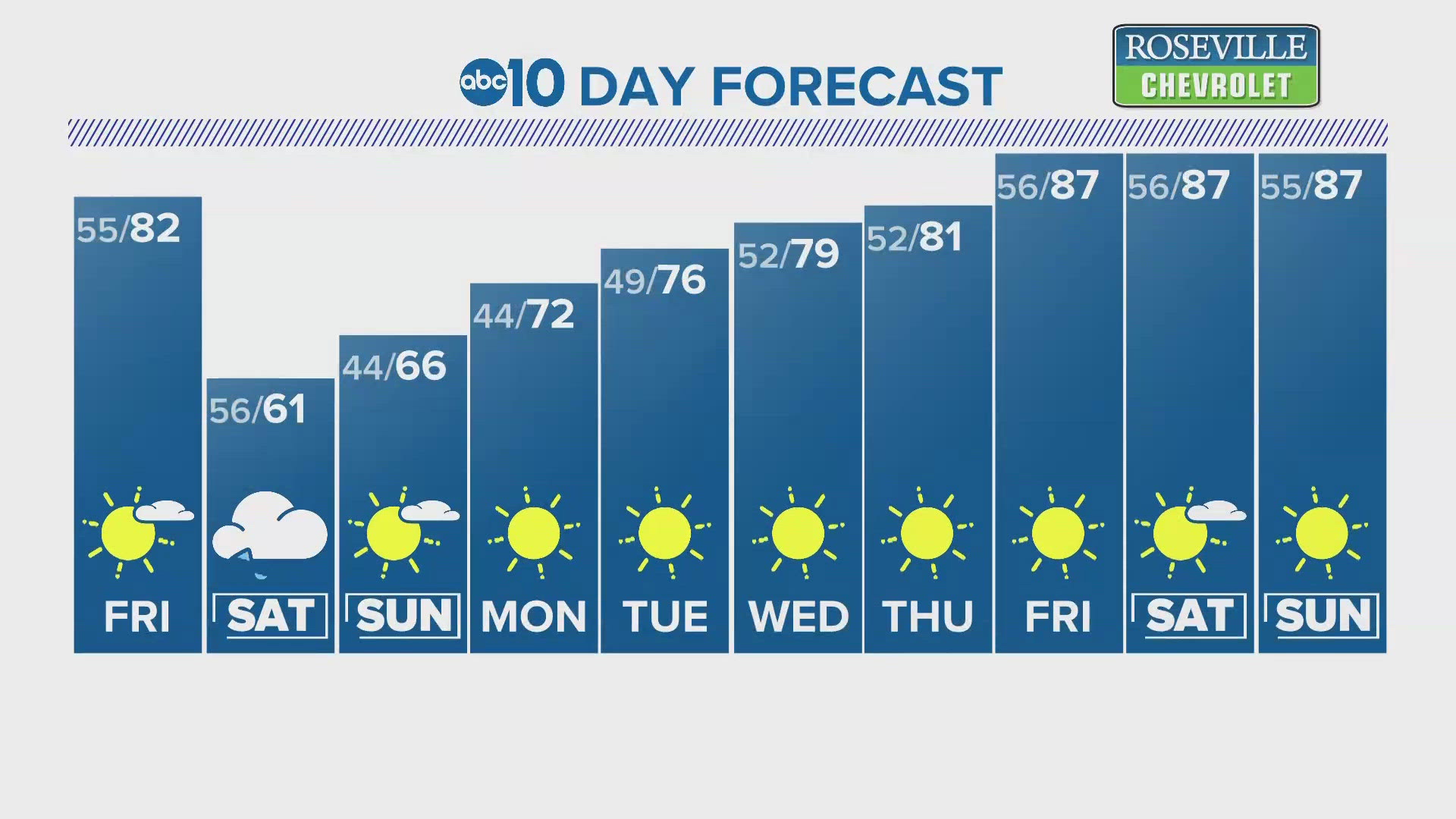SACRAMENTO, California — Sept. 30 marks the end of a water year to remember in California.
With the new water year kicking off Oct. 1, it’s worth looking back at the water year that was from record snowfall to landfalling tropical storms and everything in between.
Entering the 2022-23 water year, a rare third consecutive year of La Niña dampened hopes of breaking the historic drought California was enduring as it entered the water year.
Although the La Niña event was weakening, California typically ends up drier during these events, and seasonal outlooks favored a drier fall and winter for the state. Those predictions couldn't have been more wrong.
California was hammered with a train of atmospheric river events throughout the winter and spring. The first of these atmospheric river events slammed into California the day after Christmas and the next three weeks featured 10 separate landfalling atmospheric rivers.


During this stretch, valley totals ranged from 8-15" of rain, the foothills received 20-30" of rain, and the Sierra received a whopping 10-15 feet of snow. The rain and snow didn't stop there.
Although February was slightly below average in terms of precipitation, March featured a return of a persistent train of atmospheric rivers slamming into the state. Sacramento received nearly 5" of rain, well above the average of 2.8" for the month.
All the rain and snow came with a price, however, and widespread flooding dominated headlines throughout the early months of 2023.
By the time of the last snowfall in May, many ski resorts had seen their snowiest winter on record, including Kirkwood, Mammoth, Bear Valley, Dodge Ridge and Boreal. All those resorts surpassed the elusive 700" benchmark.
The Central Sierra Snow Lab, located at Donner Pass, received 754" of snow this year, which equates to almost 63 feet.
California settled into its typical dry pattern once the summer rolled around, but the wet soil levels kept wildfire danger low throughout the summer, and the very cool and cloudy spring and early summer created conditions that were deemed “best case scenario” by the California Department of Water Resources (DWR).
Two events toward the end of summer also helped keep moisture levels elevated as the state entered the height of fire season: Hurricane Hilary and an unseasonably cool storm during Labor Day weekend.
Although the effects of Hilary were modest in Northern California compared to down south, the Sierra still picked up beneficial rain as the system passed through.
Heading into the new water year, California is in excellent shape with water storage and Downtown Sacramento will end the water year with 26.22" of rain, well above the average of just over 18".


After the melt-off period in the spring and summer, Lake Shasta was at 98% capacity, Oroville was at 100% capacity, and Folsom Lake was nearly full at 95% capacity. These bodies of water were quite parched heading into the winter due to the three years of drought preceding the deluge and ranged from 25-32% capacity before the atmospheric river events rolled in.
Reservoir levels remain elevated, too. As of Sept. 27, Shasta is at 74% of capacity (131% of historical average), Oroville is at 75% (136% of historical average) and Folsom is 69% full (135% of historical average).
According to DWR, groundwater storage also increased by an impressive 3.2 million acre-feet thanks to the wet winter.
With a strong El Niño building in the Pacific, the odds are shifted toward another wet winter for California.
WATCH MORE ON ABC10: Water Wasted | What happened to all the water from California's historic winter?



















